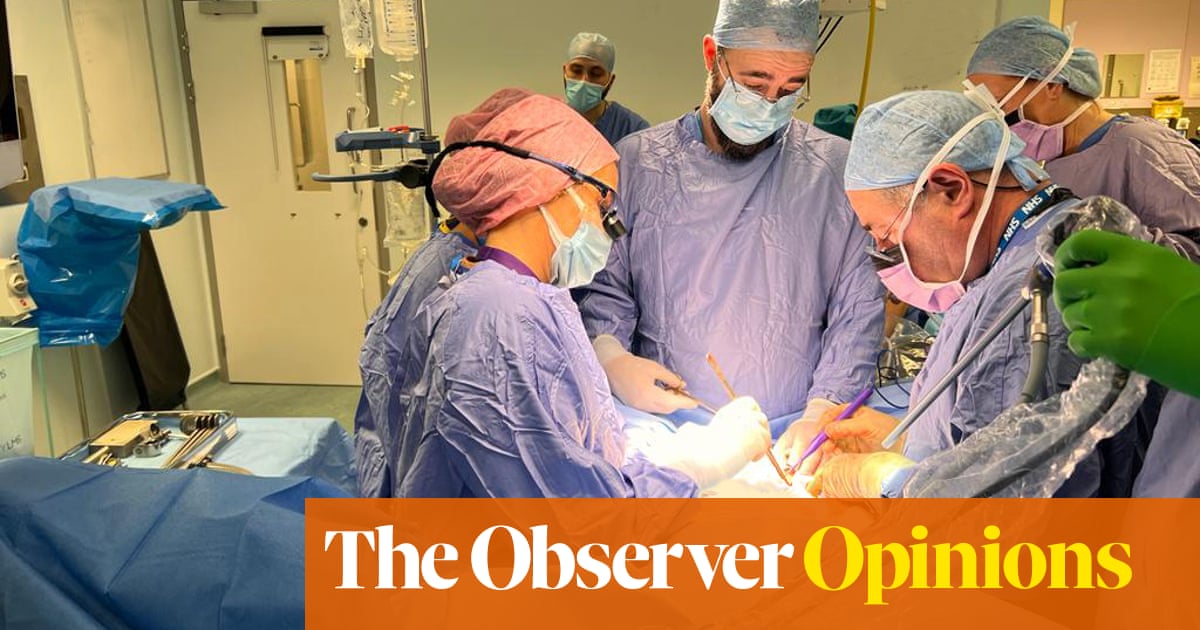
ow do we return to some semblance of normality without risking a second wave of severe disease and death? Two weeks after lockdown began, discussions are moving towards the prospect of an exit strategy. There is no rule book for this – it has never been done before in modern times – but some are pinning their hopes on large-scale testing to enable this. Is this realistic, and if so how will it work?
There are two basic types of test: tests for the virus itself (swab tests that look for current infection) and tests for antibodies to the virus (blood tests that indicate prior infection). In the past few weeks in the UK we have carried out swab tests on people who are ill enough to be admitted to hospital. Yet many less severe cases of coronavirus are going undiagnosed, so we don’t really know how many people have been infected. We also don’t know if these people are immune to reinfection, or for how long.
Countries such as South Korea have used the swab test to identify all cases (not just the severe cases that are admitted to hospital) and then traced and isolated all the people they have been in contact with. This approach relies on a very large capacity for running swab tests, and a population ready to present for testing as soon as symptoms occur, and adhere to strict observation of self-isolation rules. Scaling up swab-testing in the UK has been problematic and although it will undoubtedly improve as the infrastructure gets better, and new and faster tests are introduced, waiting until we have the capacity to test and contact-trace all suspected cases may mean many more weeks of lockdown.
Antibody tests can be used to find out whether someone who had symptoms but was not swab-tested at the time did indeed have the virus, or whether their symptoms were due to something else. These tests are best done three or four weeks after the initial onset of symptoms, when the majority of people will have developed detectable antibodies. The tests can be carried out in designated laboratories or provided as simple kits for self-testing. The government has discussed the purchase and validation of self-testing kits, and floated the idea that a positive antibody test might lead to the issuing of some kind of immunity certificate. However, we don’t yet have a reliable test and we won’t know for some time whether antibodies predict immunity to reinfection, or for how long.
There seem to be two problems with the self-testing kits. The first is lack of specificity: people who have not been infected with the virus giving a false positive result (most likely due to having antibodies to closely related coronaviruses, but not the one that causes Covid-19). The other is people who have been infected giving a false negative result (possibly because they have very low levels of antibodies, as seems to be the case with people who have had very mild symptoms). Both are obviously problematic and would mean that individuals could not rely on the test to inform their own personal risk or behaviour. Whether highly sensitive and specific self-testing kits will be available in time to inform our exit strategy is unknown.
Perhaps more usefully, antibody tests – even if they lack some sensitivity – can be used to estimate what proportion of the population has already been exposed to the virus. This is really helpful in telling us whether there is likely to be widespread immunity in the population and thus how likely there is to be a second wave of infections (and how big that wave might be), once the social-distancing measures are relaxed. These tests would be carried out in a laboratory and could be scaled up very easily. In this case, as long as the test is highly specific for the Covid-19 virus and we know roughly what proportion of true positives it detects (does it miss half, one in five, one in 10?), we can use the data to model how widely the infection is likely to have spread.
If population-level antibody testing suggests that, say, half of the population has already been infected, relaxing of the social distancing rules is less likely to lead to a second wave of serious infections than if only one in 100 has been infected. Public Health England’s laboratories at Porton Down are reportedly making very good progress with this population-level testing, raising hopes that useful data may be available soon.
In the meantime – given the current absence of population-level antibody data or nationwide test-and-trace capability – a combination of a gradual relaxing of the lockdown, monitoring the impact of this on hospital admissions and continued shielding of the most vulnerable may be our best bet.
Eleanor Riley is professor of immunology and infectious disease at the School of Biological Sciences at the University of Edinburgh












